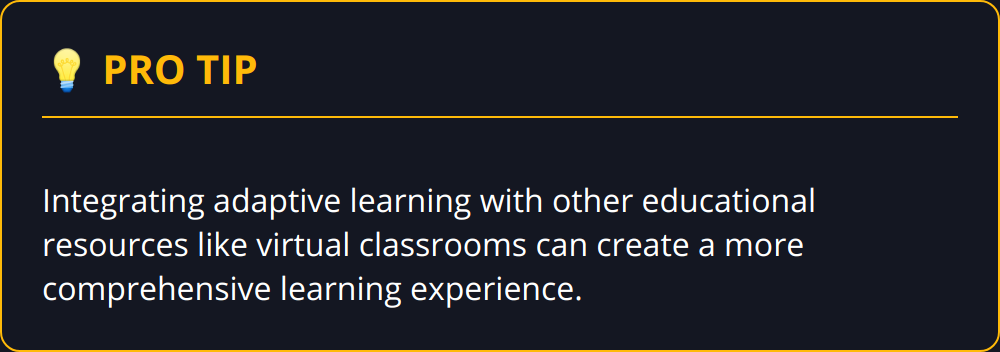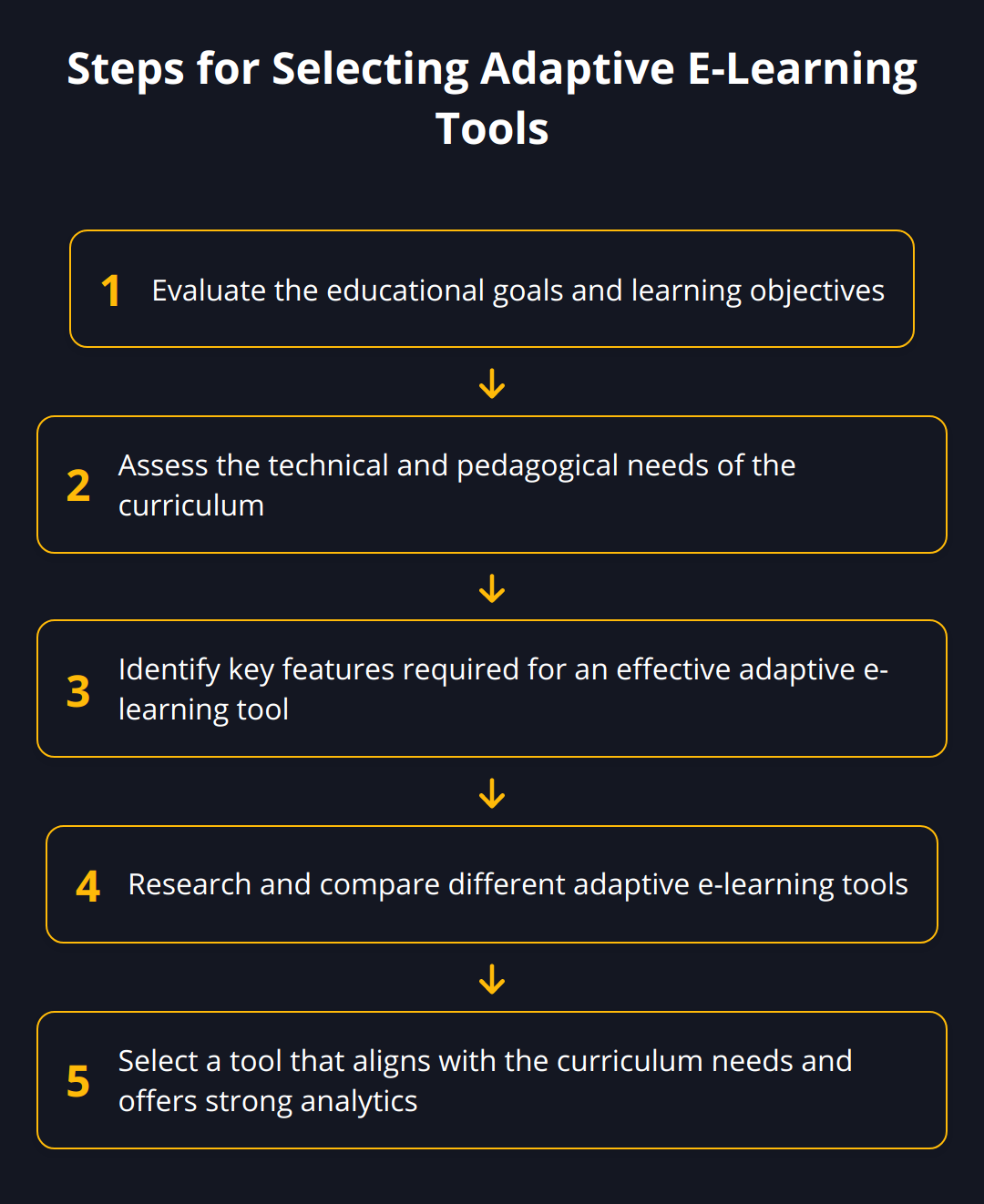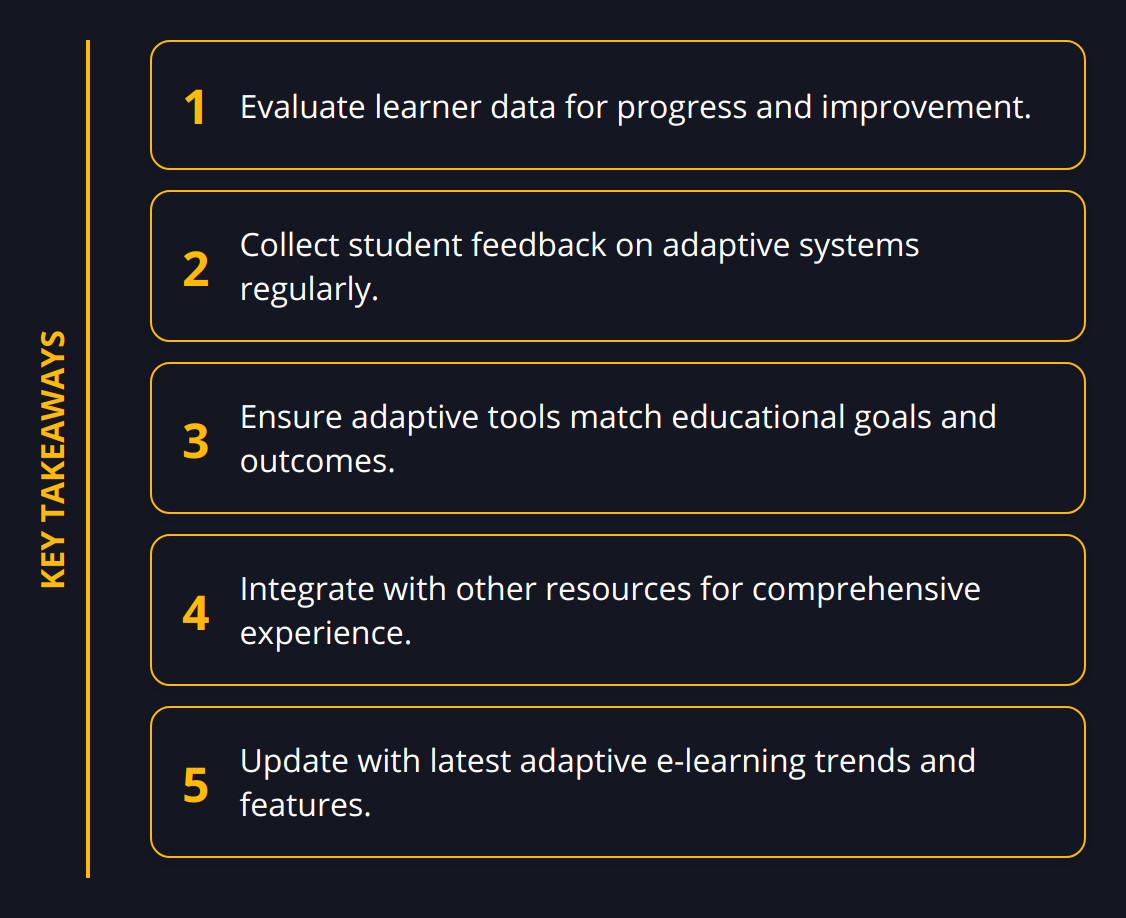As education continues to evolve, personalization has become a game-changing factor in fostering successful learning experiences. We at newroom connect understand that the one-size-fits-all approach is fading into obscurity, making way for adaptive e-learning tools that cater to individual learner profiles.
These sophisticated systems harness the power of data and learner feedback to create tailor-made content, enhancing engagement and effectiveness. Join us as we explore how these transformative tools can reshape the educational landscape by delivering customized learning paths and measurable improvements in student and educator experiences.
Adaptive E-Learning Decoded
When we discuss the advancement of educational technology, adaptive e-learning often leads the conversation. At its core, adaptive e-learning is a dynamic approach that tailors educational experiences to each learner’s unique needs. It’s a significant leap from traditional learning environments, where materials stay constant for all participants, regardless of their knowledge, skills, or learning pace.
These smart learning systems come loaded with a variety of features, all aimed at personalizing the learning journey. They track a learner’s progress, identify strengths and weaknesses, and then adjust the content in real time to challenge or support the individual. It’s like having a personal tutor who knows exactly where you are in the learning process and what you need next to excel.
But how do these tools actually personalize learning? Let’s break it down:
-
Data-Driven Insights: Adaptive tools collect data on learners’ performance and use it to inform the teaching approach. For example, if a learner is struggling with a specific concept, the system will detect this and can either offer additional resources on that topic or adjust subsequent content to ensure comprehension.
-
Feedback Loops: Learners receive instant feedback, enabling them to understand their mistakes and correct them in the moment. This immediate response fosters a learning environment where students can quickly adapt and improve.
-
Customized Content Delivery: Learners no longer have to sit through content they already know. Instead, the adaptive system will present new challenges, keeping them engaged and preventing boredom.
-
Flexible Pacing: The pace of learning is adjusted automatically. Fast learners are not held back, while those who need more time can learn at a speed that suits them without feeling rushed.
-
Predictive Analytics: Using advanced algorithms, adaptive systems can predict where a learner might face challenges and preemptively provide resources, making the learning journey smoother and more efficient.

Implementing adaptive e-learning tools into education strategies can have a profound impact on engagement and learning outcomes. Studies have shown that adaptive learning can significantly improve pass rates and reduce dropouts. Specifically, a project by Education Growth Advisors found that adaptive learning led to a 18% improvement in pass rates.
For those looking to harness the power of adaptive e-learning, here are some actionable tips:
-
Evaluate Performance Regularly: Consistently analyze learner data to monitor progress and identify areas for improvement.
-
Gather Learner Feedback: Use surveys or suggestion boxes to collect insights from students on their experience with the adaptive system.
-
Align with Objectives: Check that your adaptive tools align with your educational goals and outcomes.
-
Integrate Supplementary Resources: Combine adaptive learning with other resources, like virtual classrooms, for a comprehensive learning experience.
-
Stay Updated: Keep pace with the latest trends in adaptive e-learning, as these systems are constantly evolving to offer better experiences.

Remember, the endgame of adopting adaptive e-learning tools is not solely about integrating cutting-edge technology. It’s about creating a more inclusive, effective, and personalized learning environment that values each learner’s individual journey. By doing so, we are not just educating; we are empowering learners to reach their greatest potential.
Personalization in E-Learning: A Closer Look
Adaptive e-learning tools bring a level of personalization to the educational experience that traditional methods struggle to match. With each student receiving a tailored learning journey, it’s fair to say that these tools are carving a formidable path in educational technology. Let’s delve into the specific advantages for students and educators.
Personalization is not just a buzzword; it’s the heartbeat of modern education. For students, adaptive e-learning means learning journeys meticulously mapped to their individual strengths and needs, leading to a more engaging and motivating experience. This isn’t just a win for the learners; educators reap substantial rewards too. With detailed insights into each student’s progress, teachers can better guide and support their educational journeys.

For Students:
-
Meet Them Where They Are: Students no longer feel the frustration of plowing through familiar material or the anxiety of lagging behind.
-
Building Confidence: When students receive content that matches their aptitude, it empowers them and builds confidence in their abilities.
-
A Sense of Ownership: Engaging with a curriculum that adapts to their input allows students a sense of control over their learning, increasing motivation and interest.
For Educators:
-
Spotlight on Progress: Constant course adjustments based on real-time data allow educators to pinpoint exactly where a student may be struggling.
-
Efficient Resource Allocation: With adaptive tools highlighting individual needs, teachers can focus on where their attention is needed most rather than take a scattergun approach.
-
Data at Their Fingertips: Educators have ready access to extensive data, allowing for well-informed decisions and identification of broader trends.

Practical Tips for Making the Most out of Adaptive E-Learning:
-
Use data analytics regularly to monitor student progress and adapt teaching strategies accordingly.
-
Combine adaptive e-learning with engagement boosting strategies to maximize student participation.
-
Involve learners in the process by seeking their input on the adaptive learning experience.
-
Update and refine e-learning content regularly to keep it challenging and relevant.
-
Emphasize mastery and competence, rewarding progress through the adaptive e-learning system.
While the initial setup of adaptive e-learning systems may require an upfront investment in time and resources, the long-term benefits—enhanced engagement, personalized learning paths, and actionable insights for continuous improvement—make it abundantly clear that adaptive tools are reshaping the educational landscape for the better.
The beauty of these adaptive systems is in their ability to improve learning outcomes substantially. Data isn’t just cold numbers; it tells a story of learner involvement, comprehension, and ultimate success. With a backdrop of solid, actionable insights, educators can craft a learning experience that resonates with every student, laying a robust foundation for lifelong learning.
Implementing Adaptive E-Learning
With the pressing need to tailor educational content to individual learner needs, integrating adaptive e-learning into your curriculum opens up a new dimension of personalized education. Let’s tackle the meaningful application of adaptive tools, ensuring that every student benefits from a learning experience designed exclusively for them.
Assessing Your Current E-Learning Environment
Before introducing adaptive e-learning, a thorough assessment of your current environment is fundamental. This means scrutinizing existing content, educational goals, and the diverse needs of your learners. Where are the gaps in understanding? What are common stumbling blocks? Existing data helps pinpoint these areas, guiding the integration of adaptive tools for maximum effectiveness. Consider surveys to measure learner satisfaction or skill attainment to gather invaluable insights.
Identifying the Right Adaptive E-Learning Tools
Not all adaptive e-learning tools are created equal. Picking the perfect match for your curriculum requires clear identification of specific educational needs and a dedication to finding a tool that speaks to those requirements. Pay attention to critical features such as user experience, scalability, and compatibility with existing systems. Also, look out for those with robust analytics capabilities to keep learners and educators equally informed of progress.

Best Practices for Integration into Existing Programs
Successful integration of adaptive learning tools is an art that balances innovation with the practicality of day-to-day teaching and learning. To do so effectively, consider the following:
-
Start small by targeting single courses or subjects, allowing for focused measurement of effectiveness before a widespread rollout.
-
Encourage educator and learner buy-in by demonstrating the personal benefits and improved outcomes associated with adaptive learning.
-
Ensure that adaptive tools are part of a blended learning strategy, which may include traditional instruction or hands-on activities for a holistic approach.
-
Provide ample training for educators to adapt to the new tools so that they are comfortable and competent in utilizing them.
Adapting your curriculum to include personalized learning paths is not just an improvement; it’s a step towards educational excellence. The right adaptive e-learning tools foster an environment of continuous improvement, adeptly preparing students for the future while supporting educators in delivering world-class instruction.
Remember, in this digital era, e-learning is not a static concept, and neither should your curriculum be. Empower students and teachers alike by transforming the learning journey into an exercise in personal growth and discovery with adaptive e-learning.
Final Thoughts
The journey towards personalized learning is well underway, with adaptive e-learning tools being pivotal in this shift. These transformative systems bring personalized learning into sharp focus, allowing for educational experiences that pivot on the individuality of each learner. We’ve uncovered the benefits for both students and educators and provided practical tips for integrating these tools into your educational strategies.

Adaptive e-learning is not just an enhancement—it’s a profound evolution of the learning process. Its implementation reflects a deep understanding that education is most effective when it aligns with each learner’s unique needs. Personalization through adaptive e-learning holds the key to unlocking a new world of educational opportunities, characterized by:
-
Higher engagement and motivation
-
Improved comprehension and skill acquisition
-
Efficient use of educational resources
-
Deeper, data-driven insights into learning progress
We at newroom connect are dedicated to innovation and excellence in virtual learning environments. We build solutions that not only complement but enhance the power of adaptive e-learning. Our platform is an investment in the potential of each learner and an acknowledgement of the diverse ways in which people learn and grow.
To move forward in education and training, we must maintain a firm commitment to adapting to learner needs. It’s vital to foster a culture that values continuous innovation and strives for educational approaches that are inclusive, dynamic, and forward-thinking.
We encourage you to explore the possibilities that personalized e-learning brings. Consider newroom connect as your ally in crafting immersive, engaging, and effective educational experiences. Together, we can reinvent the educational landscape and offer learning that is as unique as the individuals partaking in it.
Thank you for joining us on this thoughtful exploration of adaptive e-learning. As we continue to pioneer new pathways in e-learning practices, we look forward to contributing to a future where every learning experience is not just a process, but a personal journey towards excellence.


